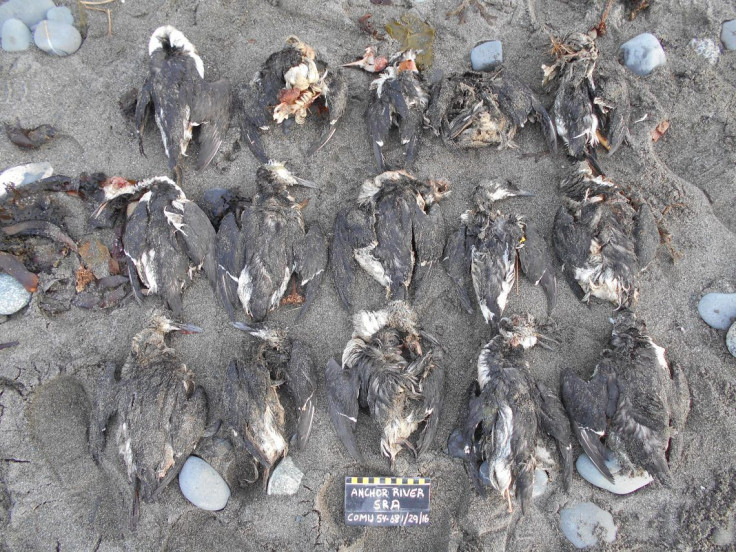Largest Mass Seabird Die-Off In Recorded History Caused By 'The Blob'

KEY POINTS
- From 2015 to 2016, about 62,000 dead or dying common murres washed ashore
- Researchers estimate the actual number of deaths to be close to one million
- A phenomenon called 'the Blob' caused a squeeze in the seabirds' food supply
- The event is the largest mass die-off of seabirds in recorded history
In 2015 and 2016, thousands of dead common murres washed ashore from California to Alaska. The mass death was unprecedented, not just for the affected species, but for all bird species worldwide.
In a new study published in PLOS ONE, the authors described what likely led to the massive die-off.
Common Murres
Common murres are some of the most extensively studied birds in the world. However, scientists were stumped when about 62,000 common murres turned up dead or dying in shores between the summer of 2015 and spring of 2016. During and shortly after the event, colonies also struggled to reproduce.
So far, starvation is the only explanation for the mass die-off and the researchers of a new study described how something called “The Blob” likely caused it.
‘The Blob’
The mass die-off co-occurred with the most powerful marine heatwave on record that persisted from 2014 to 2016. According to the researchers, a phenomenon called “the blob,” wherein ocean water temperatures exceed the average, then, caused a “squeeze” on the ecosystem’s food supply.
Basically, the Blob squeezed food supply in two ways: by altering phytoplankton and increasing the metabolism of cold-blooded fish. When the warmer temperatures altered the makeup and range of the plankton communities, the nutrient flow in the region significantly diminished, thereby reducing the food that forage fish eat. At the same time, with the fishes eating more than their usual share, the birds are left with not enough food to survive.
For instance, common murres need to consume half of their weight in prey every single day, and they do so by eating mostly small forage fish such as anchovies and sardines. With less forage fish due to changes in the phytoplankton and increases in the metabolism of larger fish, the common murres had little to nothing left to eat.
“Think of it as a run on the grocery stores at the same time that the delivery trucks to the stores stopped coming so often,” second author Julia Parrish said. “We believe that the smoking gun for common murres — beyond the marine heatwave itself — was an ecosystem squeeze: fewer forage fish and smaller prey in general, at the same time that competition from big fish predators like walleye, pollock and Pacific cod greatly increased.”
Mass Die-Off
As a result, a number of species including tufted puffins, baleen whales and Cassin's auklets experienced mass die-offs during the period, but no other species experienced greater losses than common murres. In fact, scientists say that because only a fraction of birds that die actually wash ashore, the number of deaths is, approximately, close to a million.
“The magnitude and scale of this failure has no precedent,” lead author John Piatt said. “It was astonishing and alarming, and a red-flag warning about the tremendous impact sustained ocean warming can have on the marine ecosystem.”
All in all, the event is the largest mass die-off of seabirds in recorded history.
© Copyright IBTimes 2025. All rights reserved.






















